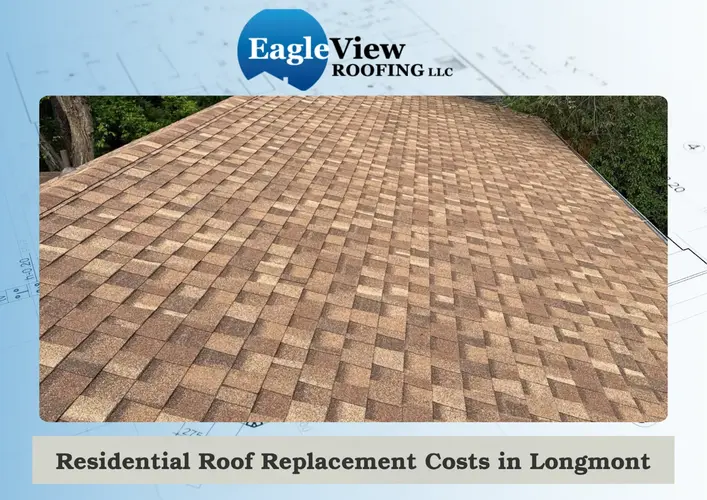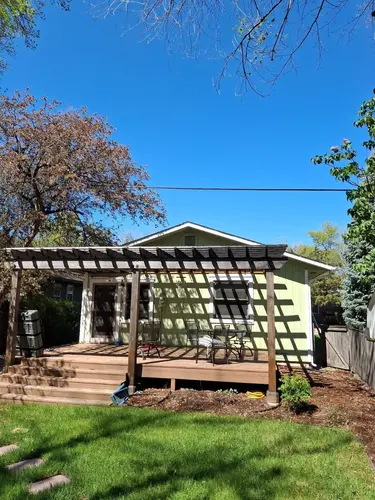As a homeowner in Longmont, it’s important to keep a close watch on major expenses, especially when it comes to projects like roof replacements. With changing market conditions, labor costs, and material availability, understanding the current trends in residential roof replacement costs in Longmont is essential. So, are roofing costs going up this year? Let’s take a closer look at what you can expect and how it might affect your plans.

What’s Happening with Roofing Costs Nationally and in Colorado
Nationally, roofing costs have seen a steady incline over the past few years. This trend is largely attributed to the rising prices of raw materials such as asphalt, metal, and wood. Additionally, labor shortages have made it more expensive to hire skilled workers, further driving up costs. This national trend inevitably affects Colorado, and by extension, Longmont, where similar market forces are at play.
In Colorado, the unique weather patterns also contribute to roofing costs. The state’s mix of snow, hail, and strong winds means roofs often require more maintenance and robust materials to withstand the elements. This necessity for durable roofing options can increase the overall cost for homeowners in the area.
Moreover, as environmental concerns gain traction, there is a growing demand for eco-friendly roofing solutions. While these options promise long-term savings and sustainability, they can come with a higher upfront cost, contributing to the rising residential roof replacement costs in Longmont.
The Main Factors Driving Up Residential Roof Replacement Costs in Longmont
Several key factors are driving up in Longmont’s residential roof replacement costs. Understanding these elements can help you better plan for your roofing project and manage your budget effectively.
- Material Costs: The cost of roofing materials has seen a significant increase. Asphalt shingles, a popular choice for many homeowners, have become more expensive due to supply chain disruptions and increased demand. Similarly, metal and wood prices have risen, impacting overall roofing costs.
- Labor Shortages: The construction industry is experiencing a shortage of skilled laborers. This scarcity has led to increased wages for roofing professionals, which in turn raises the cost of roof replacements. Contractors often have to compete for skilled workers, further driving up labor costs.
- Local Regulations: In Longmont, local building codes and regulations can also impact roofing costs. Compliance with these rules may require additional materials or specific installation techniques, adding to the overall expense.
These factors combined contribute to the escalating residential roof replacement costs near in Longmont, making it essential for homeowners to plan their budgets accordingly.
What Longmont Homeowners Can Expect to Pay in 2025
Looking ahead to 2025, it’s essential to consider how current trends might impact future costs. While predicting exact figures is challenging, several indicators can guide our expectations.
- Material Innovation and Costs: As technology advances, we may see new materials entering the market. These innovations could offer more durable and cost-effective solutions, potentially stabilizing or reducing material costs in the long term.
- Labor Market Trends: Efforts to address labor shortages through training programs and incentives might ease the pressure on labor costs. However, these changes take time, so it’s wise to anticipate continued high labor costs in the short term.
- Economic Conditions: Economic factors, including inflation rates and global trade policies, will also play a role. Homeowners should monitor these broader economic indicators to better plan for potential cost increases.
In summary, Longmont homeowners should prepare for potential increases in residential roof replacement costs while remaining open to opportunities for savings through technology and market adjustments.
Can You Do Anything to Offset Rising Costs?
While the rising costs of roof replacements can be daunting, there are several strategies homeowners can employ to mitigate these expenses.
- Timely Maintenance: Regular maintenance can extend the life of your roof, delaying the need for a full replacement. Simple tasks like cleaning gutters, inspecting for damage, and replacing broken shingles can prevent more significant issues down the road.
- Shop Around for Quotes: It’s crucial to get multiple quotes before committing to a roofing contractor. Comparing prices can help you find the best deal without compromising on quality. Look for contractors who offer transparent pricing and detailed estimates.
- Consider Financing Options: Many roofing companies offer financing plans that can make payments more manageable. These plans can help you spread the cost over time, reducing the immediate financial burden.
By taking proactive steps, homeowners can effectively manage their roofing expenses and potentially reduce the financial impact of rising costs.
Why It Still Makes Sense to Replace Your Roof Now
Despite rising costs, there are compelling reasons to consider replacing your roof sooner rather than later. Delaying necessary repairs or replacements can lead to more severe damage and higher expenses over time.
- Protecting Your Investment: Your home is one of your most valuable assets, and keeping it in good shape is essential. A new roof not only helps preserve structural integrity but also boosts property value and curb appeal.
- Energy Efficiency: Today’s roofing materials offer better insulation and improved energy performance. Investing in an upgrade can lower your utility bills and help offset the upfront cost over time.
- Avoiding Expensive Repairs: Aging roofs are more prone to leaks, storm damage, and wear. Addressing the issue now helps you avoid unexpected repair costs and ongoing stress.
When looking at residential roof replacement costs in Longmont, the numbers may feel intimidating at first. But the long-term benefits—from increased energy savings to better home protection—make it a worthwhile investment for homeowners planning ahead.

FAQs
Q: How often should I replace my roof?
A: The lifespan of a roof varies depending on materials and maintenance, but most roofs last between 20 to 30 years. Regular inspections can help determine when a replacement is necessary.
Q: What are the best roofing materials for Colorado’s climate?
A: Materials like metal and asphalt shingles are popular in Colorado due to their durability and ability to withstand harsh weather conditions. It’s essential to choose materials that suit your specific needs and budget.
Q: Can insurance cover the cost of a new roof?
A: Insurance may cover roof replacement if the damage is due to covered perils like storms or fires. It’s important to review your policy and consult with your insurance provider for details.
Considering a New Roof? Get a Clear, Honest Quote from EagleView Roofing
If a new roof is on your radar, now’s a smart time to start planning. Knowing what influences pricing and understanding your options can make the process far less overwhelming. At EagleView Roofing, we believe in transparency from the beginning. Our quotes are straightforward, with no hidden costs, so you can make decisions with clarity and confidence.
Don’t leave your home’s protection to chance. Contact EagleView Roofing today to learn more about our roofing services and how we can help you move forward with peace of mind.
For Longmont homeowners, staying informed is the best way to manage residential roof replacement costs in Longmont. Whether you’re looking into new materials, exploring financing, or simply curious about current trends, a little preparation goes a long way in making your roofing project a success.


